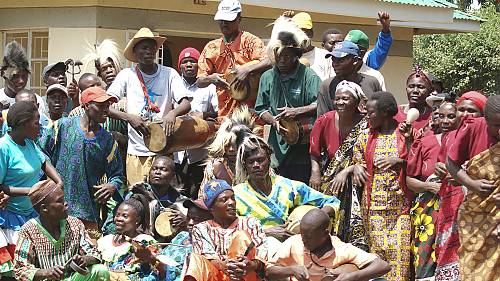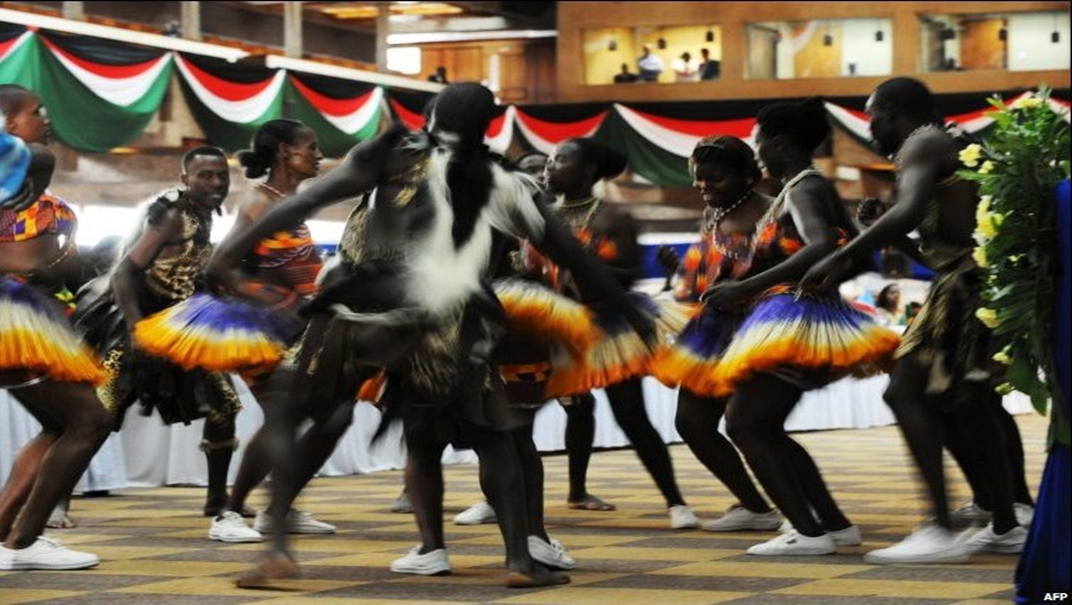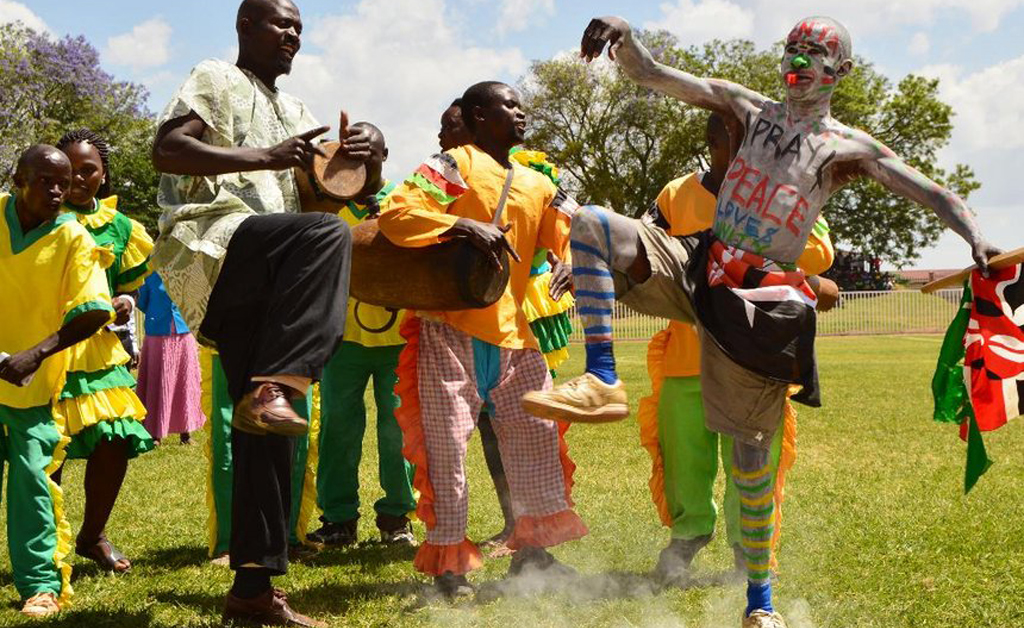The Isukuti Dance Festival is not a show. It’s a call. A cultural pulse that begins with the beat of a drum and ends with a community in motion. This annual celebration in Kakamega, Western Kenya, brings together the Luhya people to honor tradition, history, and identity.
You don’t watch Isukuti. You feel it.
Also Read:Top 7 Must-Experience Cultural Festivals in Kenya
A Detailed Explanation of the Isukuti Dance
Isukuti is both a drum and a dance. Originating from the Isukha and Idakho sub-groups of the Luhya people, it’s a fast-paced, high-energy performance using handmade drums, antelope horns, and rattles. Dancers move in tight formations. Their feet stomp the ground in unison with the rhythmic pounding of the Isukuti drums.
The dance is used in every major life event: birth, initiation, marriage, healing, and even death. It’s a symbol of unity and continuity.
In 2014, UNESCO recognized the Isukuti dance as an Intangible Cultural Heritage in Need of Urgent Safeguarding.

Why the Festival Matters
The Isukuti Dance Festival is more than performance. It’s preservation. As younger generations move to urban centers, the tradition risks disappearing. This festival brings the music back home.
Held annually in Kakamega County, the event draws participants from across Western Kenya. It’s supported by cultural organizations, local leaders, and schools. The goal is simple: Keep the drumbeat alive.
What Happens at the Festival
You’ll hear the drums before you see the dancers. The sound builds, echoing through villages and drawing crowds toward open fields.
The festival includes:
- Traditional dance competitions between villages
- Drumming circles and workshops
- Oral storytelling from elders
- Craft exhibitions
- Local food stalls
- Performances by school cultural troupes
Winners are crowned not by popularity but precision. Judges look for footwork, drum synchronization, costume authenticity, and historical accuracy.
The Drums at the Center
The Isukuti drums are made by hand using hollowed-out wood and animal hide. There are three types:
- Big drum (imburusi): Deep base, leads the rhythm.
- Medium drum (ikumba): Mid-range tone, bridges the beats.
- Small drum (inyungu): Sharp pitch, syncs with dancer’s feet.
Each drum has a purpose. Together, they speak.
How the Dance Tells Stories

Isukuti is not freestyle. Every movement has a meaning.
- Raised arms: signaling a call to ancestors.
- Rotating hips: expressing celebration or fertility.
- Jumping in circles: signifying rebirth and renewal.
- Forward steps: symbolizing progress or initiation.
The dancers wear skirts made of sisal, cowrie shells, and beads. Their outfits are not decoration. They are historical codes passed down through families.
The Role of Elders and Youth
Elders are the gatekeepers of the tradition. They teach the rhythm, maintain the instruments, and narrate the meaning behind each song.
But the youth are the energy. Schools now include Isukuti training in their extracurricular activities. Students as young as eight perform in public competitions.
This partnership between old and young keeps the culture from fading.
Impact on Local Economy
During the festival, Kakamega transforms. Hotels fill. Market vendors thrive. Visitors buy drums, woven crafts, beadwork, and traditional attire.
A 2023 survey by the Western Kenya Cultural Council estimated the festival generated over 10 million Kenyan shillings in local revenue.
The Isukuti isn’t just cultural heritage. It’s economic opportunity.
Isukuti in the Modern World
Some modern musicians now blend Isukuti rhythms with reggae, hip-hop, and gospel. While purists resist this change, others see it as evolution.
Radio stations across Kenya feature Isukuti hours. Local artists are recording albums that fuse tradition and modern storytelling.
At the heart of this movement is the desire to keep the sound relevant without losing its roots.
How to Attend the Festival
The Isukuti Dance Festival is usually held in August. The exact date varies and is announced by local authorities and cultural custodians.

Travel Tips:
- Location: Kakamega Town or surrounding villages
- Nearest Airport: Kisumu International Airport
- Transport: Buses and matatus run from Kisumu and Nairobi
- Accommodation: Budget lodges and mid-range hotels available
- Weather: Warm during the day, carry light clothing
What to Bring:
- Camera or phone for photos and videos
- Local cash (M-Pesa accepted but not everywhere)
- Comfortable shoes
- Respectful attitude—this is not a tourist show, it’s a community celebration
Why You Should Go
You won’t find this dance in a hotel lobby. You won’t hear this drumming in a curated tourist itinerary. You have to go to the source.
When the drums start and the dancers leap forward, you’re no longer a spectator. You become part of the story. The Isukuti is not performed for you. It’s performed with you.
It’s alive, loud, and unforgettable.
FAQs
1. When is the Isukuti Dance Festival held?
The festival typically takes place in August. Dates are announced each year by local leaders.
2. Where is the festival located?
In Kakamega County, Western Kenya. Events happen in town centers and rural communities.
3. Is there an entry fee?
Most events are free. Some organized competitions may have a small entry fee.
4. Who performs at the festival?
Local dance groups, school troupes, and community elders.
5. Can tourists participate in the dance?
Yes. While the core performances are by locals, open dancing sessions are common.
6. Is the festival safe for foreigners?
Yes. Kakamega is generally safe. Local guides and cultural groups are welcoming.
7. What kind of food is available?
Traditional Luhya dishes like ugali, chicken, ingokho, and vegetables.
8. Can I buy a drum at the festival?
Yes. Local craftsmen sell authentic Isukuti drums and musical instruments.
9. Are there guided tours for the festival?
Some travel operators offer cultural tours. Booking early is advised.
10. Why is the Isukuti Dance important?
It preserves Luhya identity, teaches history through movement, and strengthens community ties.


